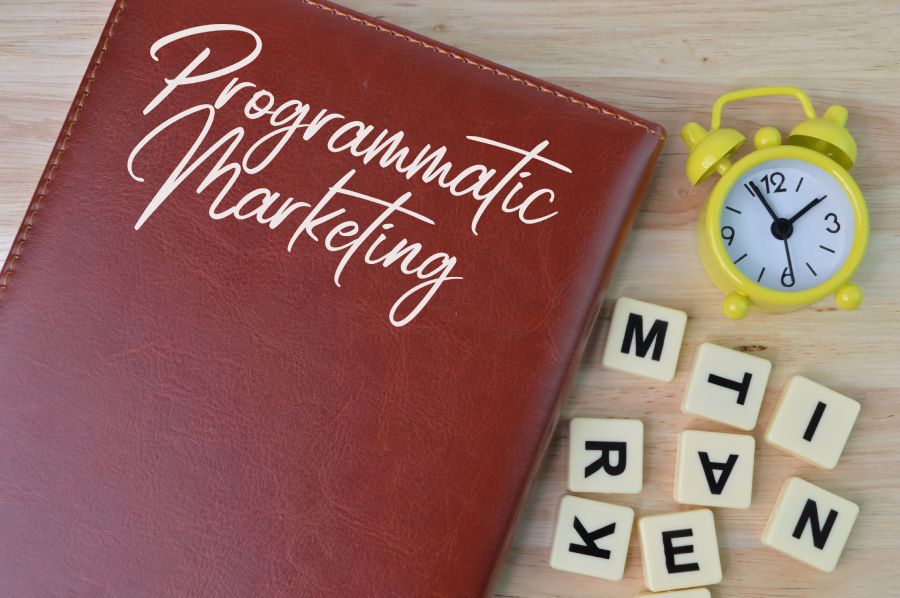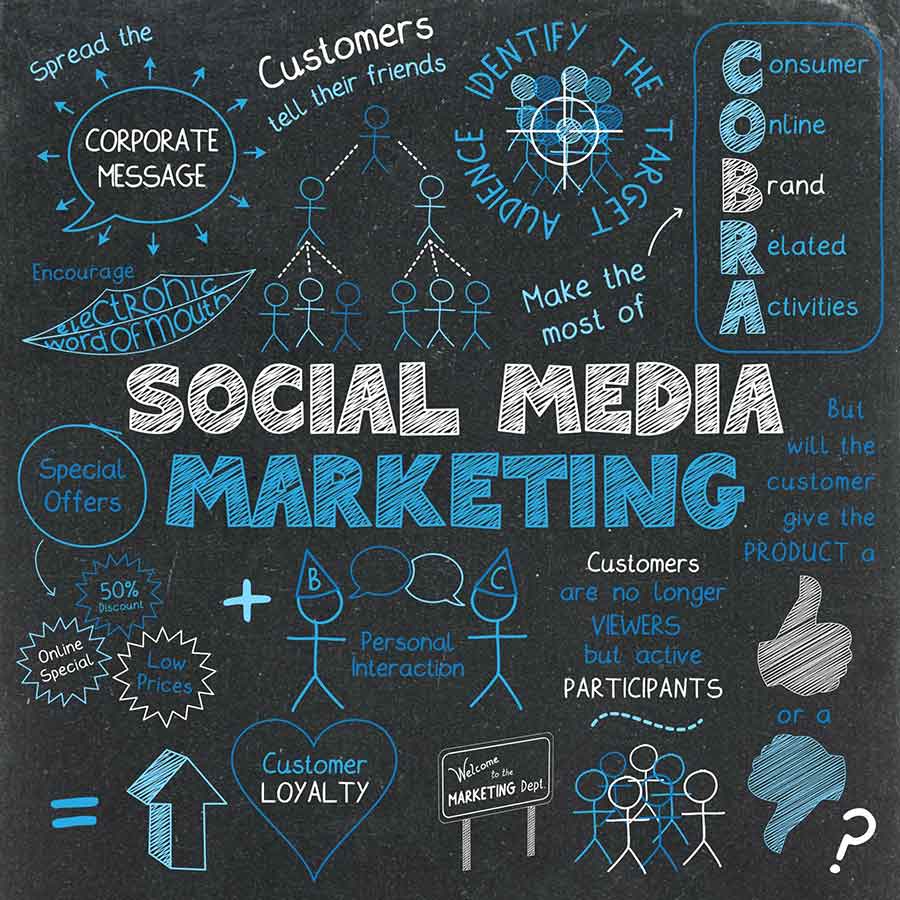What is Programmatic Marketing?

In today’s fast-paced world, it’s difficult to envision online ads without programmatic marketing. This innovation came into the picture and revolutionized how paid ads are managed, making the entire process more effective in less time.
The technique has been around for 15 years and shows no signs of slowing down. This technology is peculiar because it evolves with changing times. Marketers constantly find new mechanisms to tweak the system to engage customers and expand the clientele.
However, this tactic is profound, way more than you think. You can get the desired outcome with adequate knowledge using the right tools and resources. The article will explain what is Programmatic Marketing tactic and how to formulate a plan like a pro.
Shall we?
What is this Tactic?
Here’s a simple explanation: it is the procedure for purchasing and selling ad spaces. It uses algorithmic tools.
Rather than spending long hours negotiating with sales reps and running trial ad campaigns, people can focus on selecting the appropriate audience and improving ads. You can use AI and algorithms to buy and run digital ads while you concentrate on optimizing those ads to get the best results.
The Digital Marketing Institute defines technique as using software to buy digital ads. If you look at this explanation, you’ll easily believe this technique doesn’t require human intervention. It involves, to an extent, but algorithms control much of the procedure.
Before this tactic became popular, individuals had to reach out to publishers, manually negotiate the value of the ad directory and hustle to obtain spaces before purchasing.
Now, the entire procedure has become very efficient and cost-effective. Marketers can use suitable media based on their means to meet their target market. These people always use exchanges to purchase and sell, although we know that some of them are private.
The exchanges ensure people within agencies collaborate to purchase and sell impressions in an automated, mechanized procedure. The entire procedure is instantaneous, which leads to higher profits for all parties involved.
The Essence of Programmatic Marketing
A Statista report shows programmatic ads will represent 86% of digital ad revenue by 2026. Why should all marketers take advantage of this innovation?
1. Excellent targeting
This technique has excellent targeting capacities. Previously, conventional media buying limited ad reach because it was expensive and time-consuming. Plus, you wouldn’t know where you’re going wrong because the results won’t show for weeks. By then, you have already lost valuable resources.
This method enables every brand or agency to reach the intended market they want by buying ad space, regardless of size or operational years. Even the smallest companies can target an international audience via this technique because costs have decreased.
Moreover, this technique helps you target a local audience using geodata if you have a brick-and-mortar store.
2. Eliminates time wastage
Time wastage elimination is this procedure’s most significant advantage over traditional procedures. Previously, advertisers had to buy ad spaces manually, broker the price, negotiate the ad placement, and schedule marketing campaigns.
By the time you complete the entire procedure, you have wasted weeks on something that will fall below standard.
This system changes that as it produces outcomes in real time. It uses AI and machine learning to find great ad inventories for advertisers to place ads in strategic positions that align with the overall objectives.
You get the outcome in less than no time, so you know what to optimize and tweak for the next one.
Speaking of outcomes…
3. Easy Assessment
People can quickly assess and monitor metrics via this tactic compared to traditional media buying. When demand-side platforms (DSPs) run the campaign, it gathers all the relevant data and gives you detailed insights in real-time so you can tweak it immediately.
What are some standard metrics that DSPs show?
- Return on Ad Spend (ROAS): Revenue gained for every dollar spent on adverts. This metric helps advertisers determine the effectiveness of our marketing campaigns.
- Product Detail Page Traffic: number of views certain product detail pages have.
- New-To-Brand Purchases (NTB): If someone hasn’t bought any product in the last 365 days or ever but makes a brand new purchase, it’s classified under new-to-brand purchases.
-
Simultaneous Ad Placements
This technique is effective because you can run advertisements on several platforms. AI and machine learning allows people to run adverts simultaneously across different digital channels. For instance, you can create ads across the web, in-apps, and display systems.
Doing this can help you determine which channel suits your target audience best. For example, running social media and mobile ads may be great if your target audience is predominantly Gen Z. Also, running ads on TV may be a good strategy for millennials.
4. Saved Resources
This tactic is cost-effective since it follows a proven formula. The majority thinks that the procedure only involves purchasing ad spaces. That’s just one pie slice. It ensures you show your ads to interested individuals at the right time.
Conventional media buying thrives on speculation. You could only place ads that you thought would yield the right results, and in most cases, the highly coveted or sought-after ad spaces were super competitive.
That’s no longer feasible. This technique will never show ads to disinterested people. It aligns data and campaign variables to provide suitable online ads which resonate with your intended market, so you won’t have to waste money through speculation.
Now that you know why this technique is powerful, how can you incorporate it to generate business revenue?
Let’s find out.
How to Create An Effective Strategy
1. Set Goals and Choose Appropriate Avenues
Planning is the first step to success. It helps you determine whether you’re reaching your overall goals or derailing them.
The first thing to do is to set goals based on what you (or your clients) want. For instance, do you want to explore markets and expand your client base? Do you want to increase business revenue?
These two goals can be intertwined, but it’s essential to outline your goals so that you can select appropriate platforms to run your ads and use your ad budget wisely. You should constantly optimize your ads to accomplish these objectives for better outcomes.
Another strategy is to have the primary KPI. This doesn’t mean you wouldn’t observe other KPIs, but it will enable you to measure your progress and determine excellent bidding models.
2. Segmentation
This technique is highly customized, so it thrives on market segmentation and targeting. This is why you must be very careful when creating ads.
The ads that will work for millennials seeking passive income to cater to their families may not necessarily appeal to Gen Zers who are still in school and can afford to take financial risks. You must understand your audience to craft messages that directly speak to them.
How does audience segmentation work? The first stage is to know your customer’s journey. What are their preferences and purchase history? What triggers them to buy products?
All these can help you to segment your market and send appropriate messages that meet their pressing needs.
3. Utilize Data
Data is the bedrock of any powerful marketing campaign. When you have segmented your audience, you need data to curate the right ad content.
The initial stage of your campaign should be for awareness to reach many people. One of the many mistakes beginner marketers make is that they target everyone at the initial stage to see who the shoe fits. That’s a waste of time and resources.
Even if you’re targeting a wide range, you still need third-party data to help you narrow your audience based on the content they consume the most, the websites they visit, the type of content they consume, the apps they have on their phones, and so on.
4. Devise a Campaign Plan
While you may believe that AI and machine learning fully control and regulate programmatic marketing campaigns, that doesn’t mean you will sit back and do nothing. You need to give it directives, which can only come from a well-thought-out plan.
Before launching any campaign, you must predict and plan the campaign to see if it can grow or scale. You can predict its success based on location, prospects, objectives, and ad inventory.
Predicting the path and results will help you know how to tweak specific metrics to allocate your budget appropriately.
5. Monitor your Campaign Closely
It’s almost impossible to get it right the first time. Even if you’ve run many marketing campaigns prior, there is always something new to tweak or change. Ensure you monitor and optimize your campaigns to improve their effectiveness.
Create Your Next Top-notch Campaign with FrescoData
You don’t have to go through this journey alone. Rather than battling to create campaigns that yield results, why don’t you hire a professional agency to do the job for you?
FrescoData, a superb programmatic marketing company, is equipped and trained to run various programmatic ads across devices. We utilize several strategies, such as device ID targeting, PPC, local SEO, and IP targeting, to generate more revenue for our clients. Contact us today.




